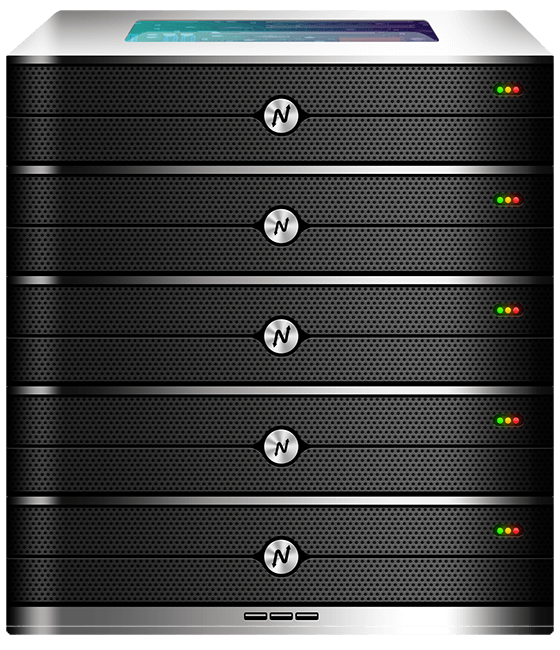Choosing the right unmanaged server hosting provider matters more than ever. For developers, startups, and agencies who want full control and lower recurring costs, unmanaged server hosting offers raw performance without managed overhead. This guide explains why unmanaged server hosting is a smart choice globally, and why pairing Indian data center infrastructure with a clear scaling plan often delivers the best cost-to-performance ratio.
Indian servers are a strong option when you want cost-effectiveness, low latency across Asia, modern security controls, and scalable capacity for international businesses. In this article you will learn how to evaluate unmanaged server hosting offers, measure speed and uptime, compare regions, explore real world use cases, and choose the right XenaxCloud plan for your needs.
What is unmanaged server hosting and who should use it?
Unmanaged server hosting means you rent a server and handle system administration yourself. The provider manages hardware, network, and basic connectivity. You manage the operating system, security updates, software stack, and backups.
Unmanaged server hosting suits experienced sysadmins, DevOps teams, and businesses that want tight control over configurations and costs. Because the provider does not include management services, prices tend to be lower than managed alternatives. That makes unmanaged server hosting attractive for batch processing, self-managed databases, CI/CD runners, and high-performance web apps where teams prefer to optimize the stack.
If you need full control over versions, container orchestration, or custom network rules, unmanaged server hosting gives you that flexibility. For teams without in-house ops, consider combining unmanaged server hosting with occasional professional support or using a provider that offers add-on management.
How to choose the right unmanaged server hosting plan
Choosing an unmanaged server hosting plan is about matching workload profile to resources. Follow this practical checklist.
- Define your workloads. Are you running databases, web apps, media processing, or background workers? Databases need more RAM and I/O performance. Web apps need balanced CPU and network.
- Pick the right CPU and RAM. For lightweight apps, 2 vCores with 8GB RAM may suffice. For production databases or high concurrency, 4 vCores and 16GB RAM or higher is safer.
- Storage type matters. SSDs are standard now. NVMe is much faster for random I/O. Unmanaged server hosting that offers NVMe is preferred for databases and high-traffic applications.
- Bandwidth and uplink speed. Check both included bandwidth and network port speed. For media delivery or frequent backups, choose higher bandwidth allowances.
- Snapshot and backup options. Even with unmanaged hosting, automated snapshots and easy restores are essential. Confirm retention periods and restore steps.
- Upgrade path. Ensure the provider allows non-disruptive vertical upgrades or easy migrations to higher tiers.
Real examples: XenaxCloud’s KVM VPS 1 — 2 Vcore CPU, 8GB RAM, 40GB Storage, 2TB Bandwidth, $5.99 is a good entry-level choice. For heavier production workloads pick KVM VPS 2 — 4 Vcore CPU, 16GB RAM, 50GB Storage, 4TB Bandwidth, $10.79. These plans are commonly used as unmanaged server hosting starting points because they balance CPU, RAM, and bandwidth clearly.
- 4 GB RAM
- 40 GB SSD Storage
- 2 TB Bandwidth
- 1 IPV4 & IPV6
Speed, uptime, and security advantages of unmanaged server hosting
Unmanaged server hosting provides performance advantages when you tune the stack carefully.
Speed: On unmanaged servers you control caching, compression, and server-level tuning. Use NGINX or a tuned web server, optimized database settings, and in-memory caches like Redis to reduce latency. NVMe storage and fast network uplinks reduce I/O and response time.
Uptime: Providers guarantee hardware and network uptime in their SLAs. With unmanaged server hosting, your responsibility is software reliability. Implement monitoring, health checks, and alerting to respond quickly to incidents. Architect redundancy for critical services.
Security: You control patching, firewall rules, and SSH access. That allows strict hardening but also places the responsibility on you. Use automated configuration management tools and vulnerability scanning to keep unmanaged server hosting secure. Add DDoS protection and WAF where available.
Example: A SaaS vendor running on unmanaged server hosting can tune PostgreSQL’s memory settings to optimize query performance, while a CDN caches static assets to improve global speed. The result is better TTFB and lower hosting costs compared to unmanaged shared solutions.

Why Indian servers are a smart choice for unmanaged server hosting
Indian data centers have matured quickly and offer several advantages for unmanaged server hosting.
Cost-effectiveness: Operational costs and bandwidth pricing in India often result in lower monthly bills. Unmanaged server hosting in India can therefore deliver more CPU, RAM, or storage for the same budget.
Low latency in Asia and competitive global speed: Indian servers are naturally closer to APAC audiences. For global reach, pair an Indian origin with a CDN and edge PoPs to serve users worldwide with good performance.
Security, reliability, and compliance: Many Indian facilities meet international security standards and offer redundant power and cooling. For businesses with regional data requirements, Indian origins can also help meet compliance rules.
Scalability for international businesses: Indian infrastructure often provides flexible scaling options—both vertical and horizontal—at competitive cost. That makes unmanaged server hosting useful for international startups that need to expand quickly without skyrocketing spend.
Using an internal link to XenaxCloud’s VPS page helps you explore the KVM VPS family that many customers select for unmanaged server hosting. https://xenaxcloud.com/vps-server/
Comparison: Indian servers vs US, Canada, Germany, UAE
| Region | Typical Latency to APAC | Support Availability | Provisioning Speed | Why it matters for unmanaged server hosting |
|---|---|---|---|---|
| India | 20–60ms | 24/7 Regional & Global | Fast (minutes to hours) | Cost-effective, good APAC reach, strong upgrade paths |
| United States | 150–220ms | 24/7 but time-zone biased | Fast | Best for NA audiences; strong enterprise options |
| Canada | 160–240ms | Local & Global | Moderate | Good for Canadian customers and NA compliance |
| Germany | 120–200ms | Business hours & global | Moderate | Preferred for EU data residency and privacy controls |
| UAE | 70–140ms | Regional & global | Moderate | Good for MENA; improving peering |
This comparison shows why many consider Indian unmanaged server hosting for APAC advantages, while US/Canada origins may be preferable for North American audiences. For global reach, use a CDN and multi-region backups.
Real-world use cases for unmanaged server hosting
Unmanaged server hosting fits many practical scenarios. Here are typical use cases with examples.
- Developer environments and CI/CD runners. Teams can spin up low-cost KVM VPS instances to run builds and tests, reducing load on shared infrastructure. Use snapshots to reset environments quickly.
- Self-managed databases. Developers who want direct control over PostgreSQL or MySQL tuning will prefer unmanaged server hosting for root access and custom kernels.
- High-performance microservices. When latency and resource isolation matter, unmanaged servers let you tune thread pools, kernel parameters, and network stacks.
- Media processing pipelines. Video encoding and batch processing benefit from dedicated CPU and storage I/O control available with unmanaged server hosting.
- Agency and client hosting. Agencies often use unmanaged server hosting to provide tailored environments per client, with scripted provisioning for consistent deployments.
Each use case requires planning for backups, monitoring, and security. For example, an agency using unmanaged server hosting should create automated backup schedules and a documented patching policy to protect client data.
Scalability options for startups and agencies
Scaling an unmanaged server hosting setup requires planning across vertical and horizontal dimensions.
Vertical scaling is straightforward: upgrade to a higher KVM VPS or upgrade disk to NVMe. This is suitable for databases and stateful services.
Horizontal scaling is best for stateless web layers. Use load balancers and multiple instances to distribute traffic. Keep session data in centralized stores like Redis.
Hybrid approach: keep the database on a high-memory single instance and scale web nodes horizontally. Use snapshots and infrastructure-as-code so new instances can be provisioned and configured quickly.
For agencies, standardize images and automation scripts so you can spin up client sites rapidly. For startups, consider autoscaling for traffic spikes and scheduled scaling for predictable peaks.
XenaxCloud’s KVM VPS and Speed KVM lines offer flexible upgrades that make these strategies practical when you choose unmanaged server hosting.
Security checklist for unmanaged server hosting
Security is your responsibility on unmanaged servers. Implement this short checklist.
- Harden SSH: disable root login and use key-based authentication.
- Apply OS and package updates promptly.
- Use a firewall and only open needed ports.
- Use automated backups and test restores regularly.
- Implement monitoring and alerting for CPU, memory, disk, and network anomalies.
- Consider adding provider-side DDoS protection or a WAF.
Following these practices reduces the operational risk of unmanaged server hosting and protects your users and data.
FAQ —
What is unmanaged server hosting?
Unmanaged server hosting provides hardware and network while you manage the OS, security, and applications.
Who should choose unmanaged server hosting?
Experienced sysadmins, DevOps teams, and businesses that need full control and want to optimize costs should choose unmanaged server hosting.
Is unmanaged server hosting cheaper than managed hosting?
Is unmanaged server hosting cheaper than managed hosting?
Generally yes, because you do not pay for full-time management; costs vary by resources and provider.
Can Indian unmanaged servers serve global traffic?
Yes; with a CDN and multi-region strategy, Indian unmanaged servers can handle global traffic efficiently.
How do I secure an unmanaged server?
Harden SSH, enable a firewall, apply timely patches, use automated backups, and enable monitoring
What is the difference between Indian VPS and foreign VPS?
Indian VPS typically gives lower latency to APAC users and competitive bandwidth costs, while foreign VPS may be closer to European or North American audiences.
Can Indian servers handle global website traffic?
Yes—paired with CDN and proper caching, Indian servers can serve international visitors effectively.
Is Indian hosting cost-effective for international users?
Often yes, especially if your audience includes APAC regions and you use CDNs for other regions.
How reliable is XenaxCloud hosting?
XenaxCloud provides fast provisioning, 24/7 support, and redundancy; reliability depends on chosen plan and configuration.
How to choose the right server for my business?
Assess traffic patterns, workload type, and growth; start small on a KVM VPS and scale based on metrics.
Recommended XenaxCloud plans for unmanaged server hosting
Based on common needs, these XenaxCloud plans are suited to unmanaged server hosting roles:
- Entry / Development: KVM VPS 1 — 2 Vcore CPU, 8GB RAM, 40GB Storage, 2TB Bandwidth, $5.99. Good for staging and low-traffic production.
- Production / Small Business: KVM VPS 2 — 4 Vcore CPU, 16GB RAM, 50GB Storage, 4TB Bandwidth, $10.79. Balanced CPU and memory for web apps and small databases.
- Performance-focused: Speed KVM VPS 3 — 8 Vcore CPU, 16GB RAM, 70GB Storage, 4TB Bandwidth, $14.39 for I/O and CPU-bound workloads.
- Agency / Multi-site: Shared Hosting Gold — 3 Websites, 25GB Storage, 500GB Bandwidth, $2.39 for low-touch client hosting, with VPS reserved for premium clients.
Always verify current offers and promotional terms on the XenaxCloud Offers Page before purchasing. https://xenaxcloud.com/offers
Conclusion — Take control with unmanaged server hosting and scale confidently
Unmanaged server hosting is an excellent choice when you need control, want to optimize costs, and have the skills to manage systems. Indian servers provide a compelling set of advantages—cost-effectiveness, APAC latency benefits, security controls, and scalable upgrades—making them an attractive option for global teams.
To start, consider KVM VPS 1 — 2 Vcore CPU, 8GB RAM, 40GB Storage, 2TB Bandwidth, $5.99 for development and KVM VPS 2 — 4 Vcore CPU, 16GB RAM, 50GB Storage, 4TB Bandwidth, $10.79 for production. Pair unmanaged server hosting with a CDN, automated backups, and monitoring to maximize performance and reliability.






